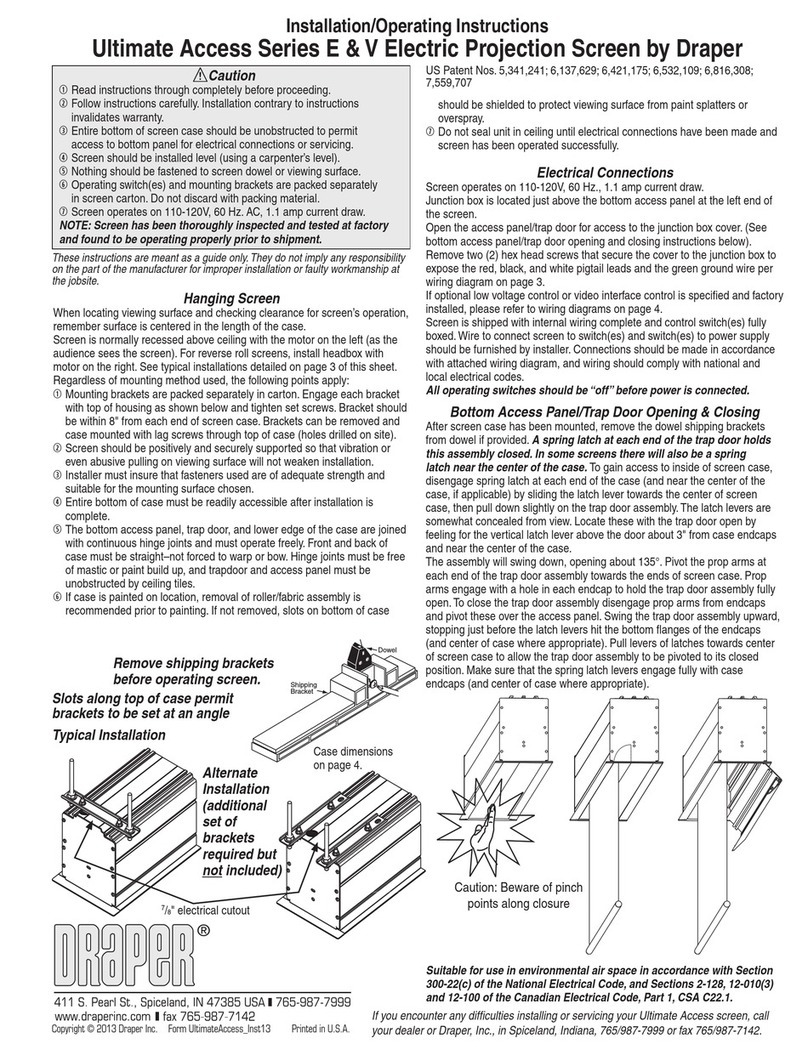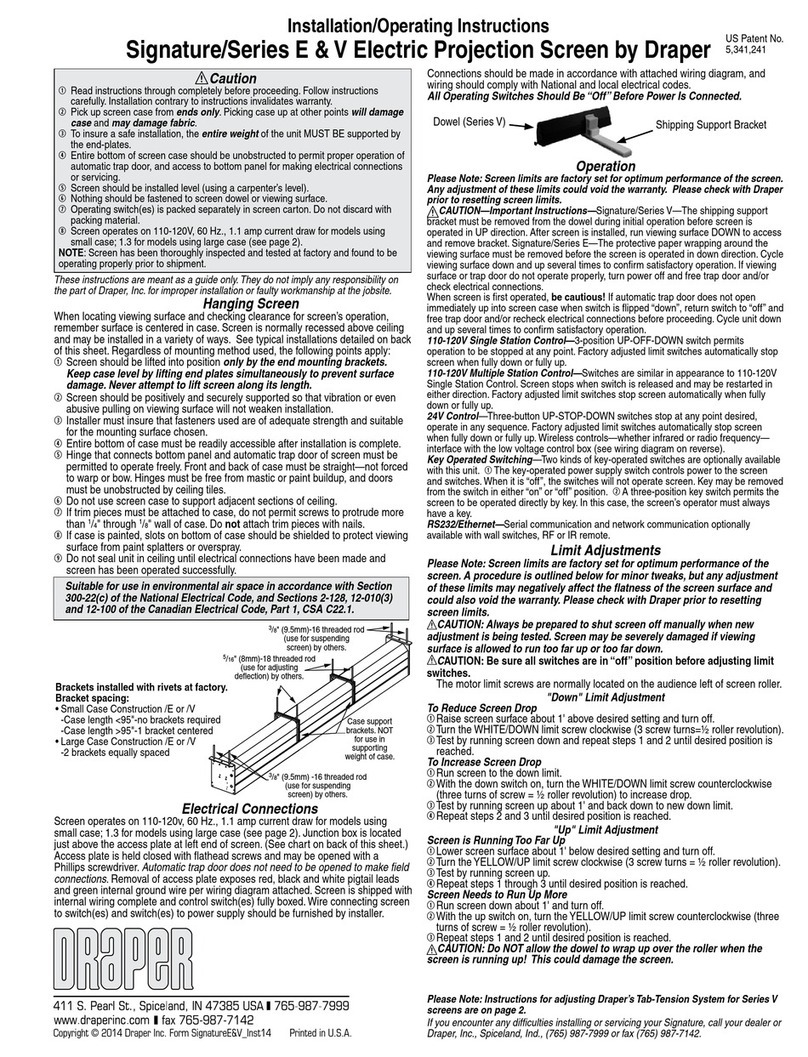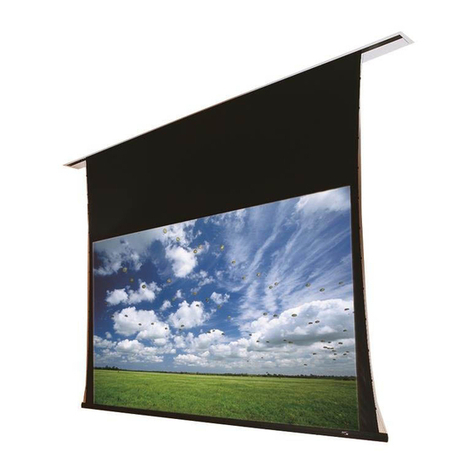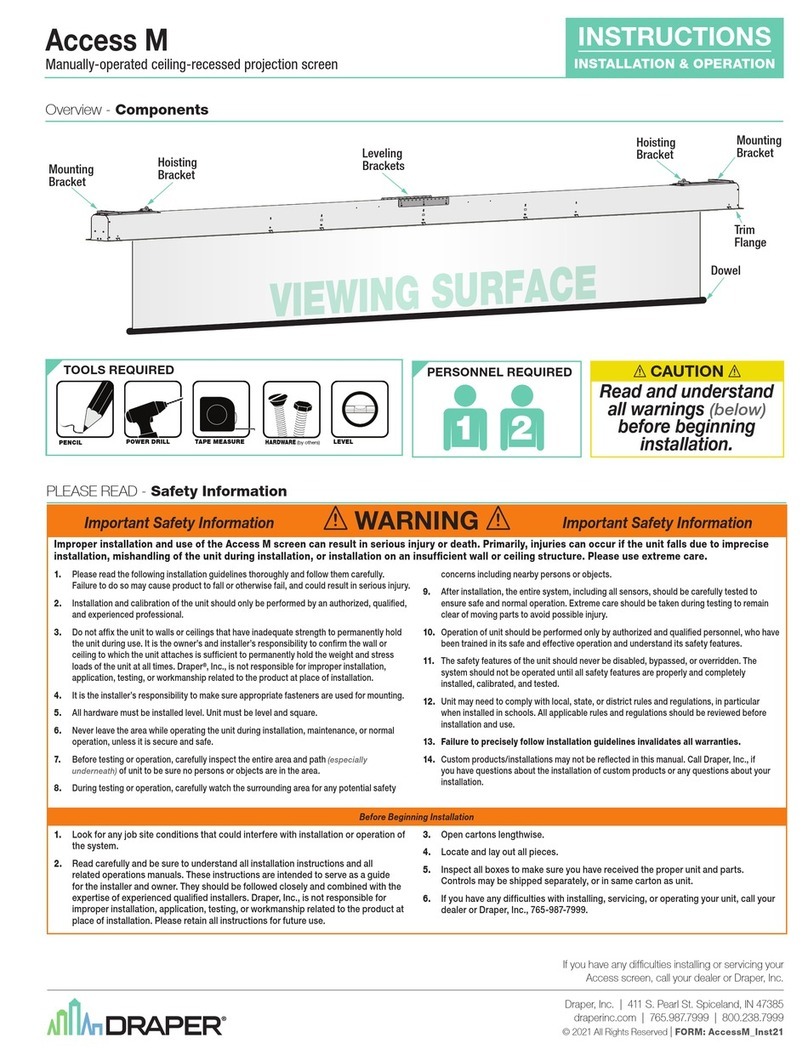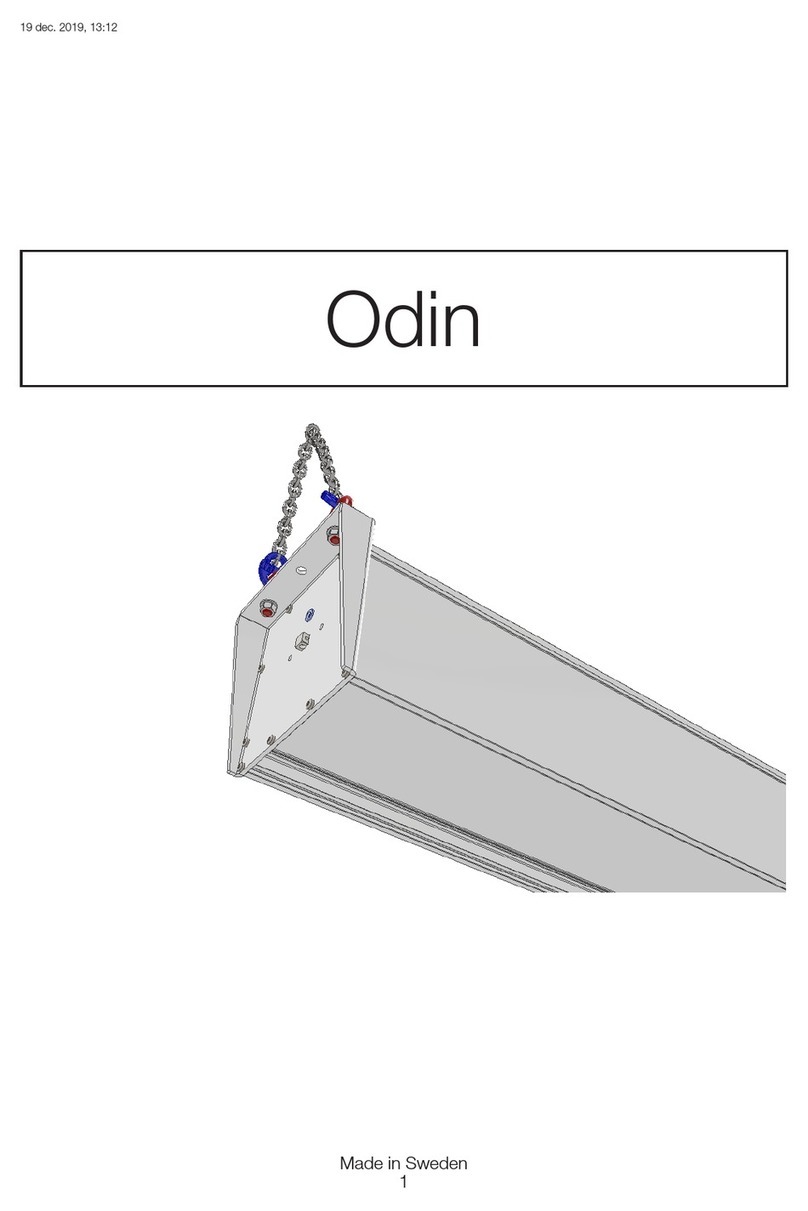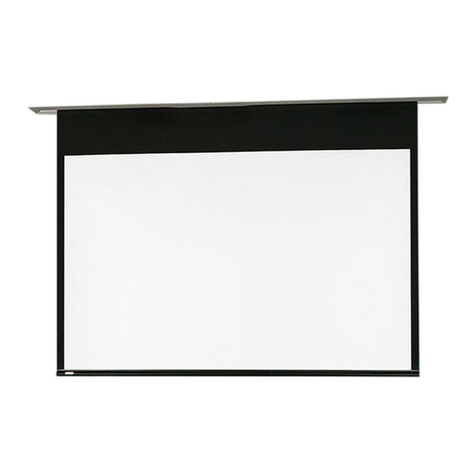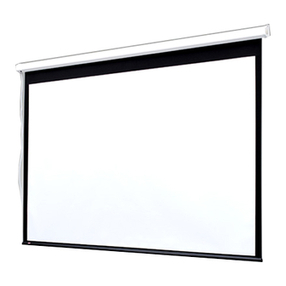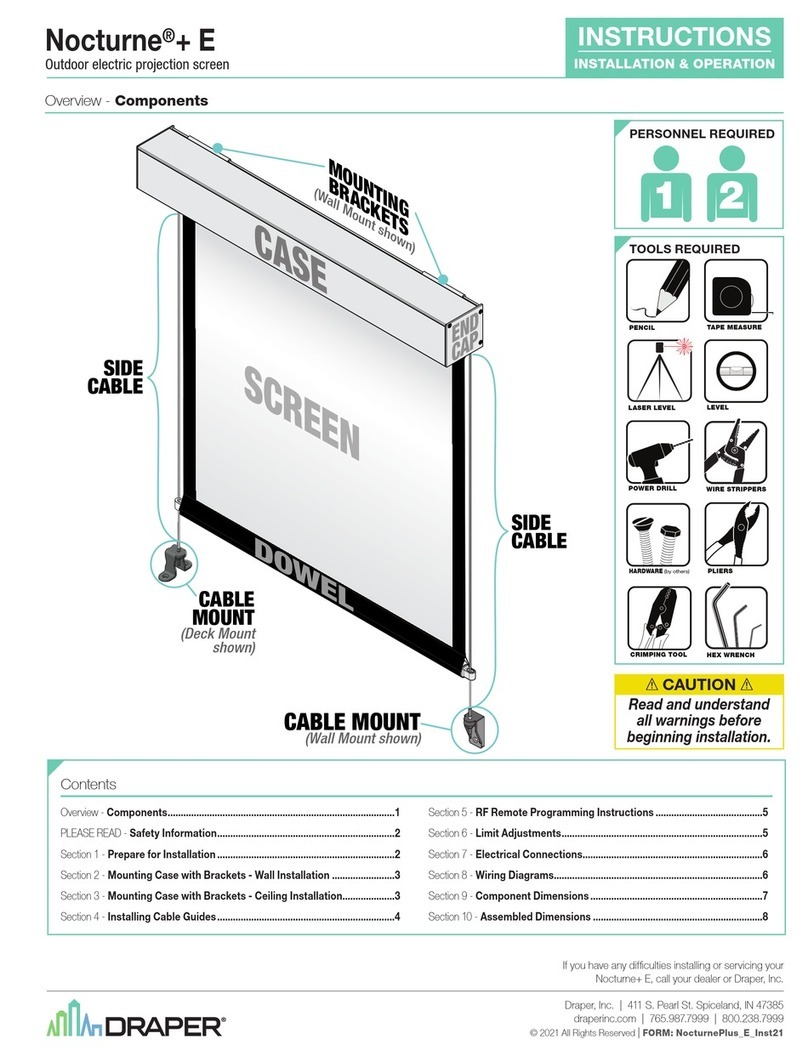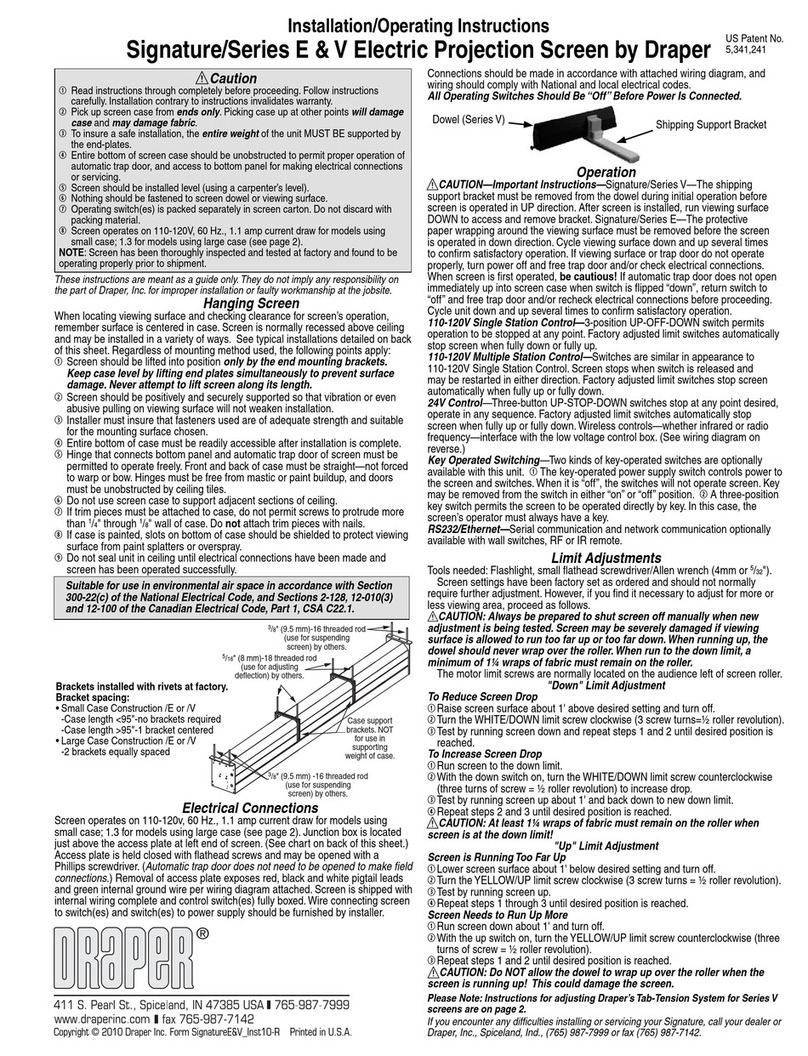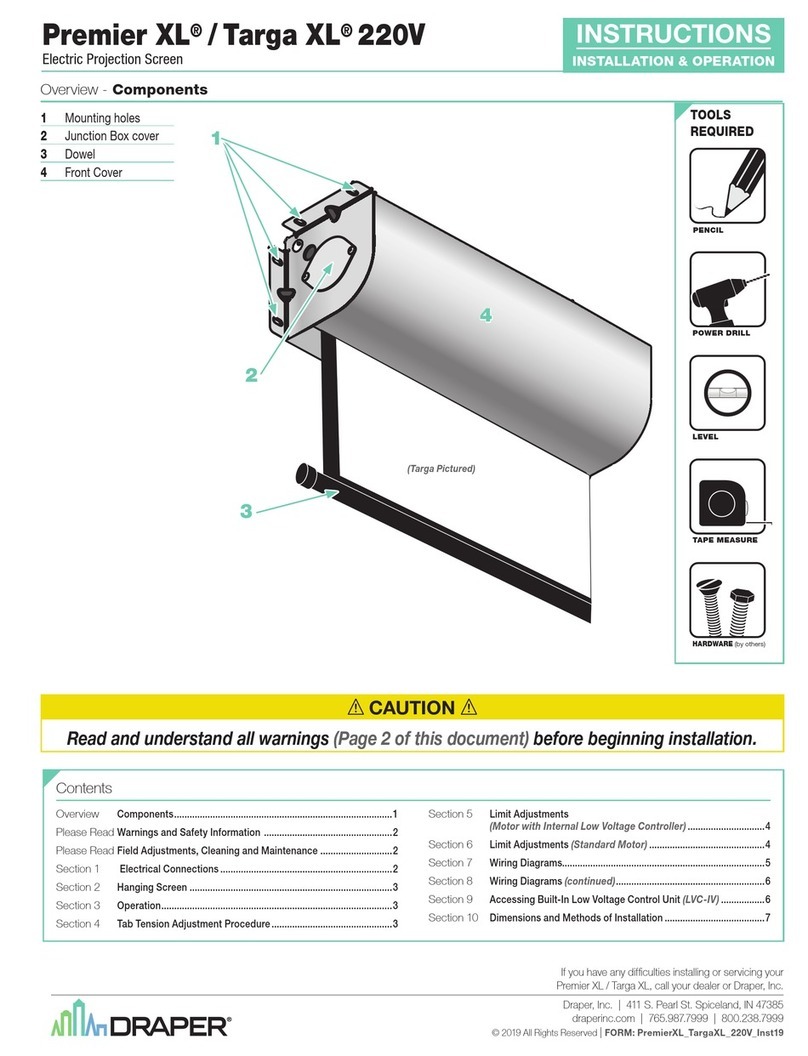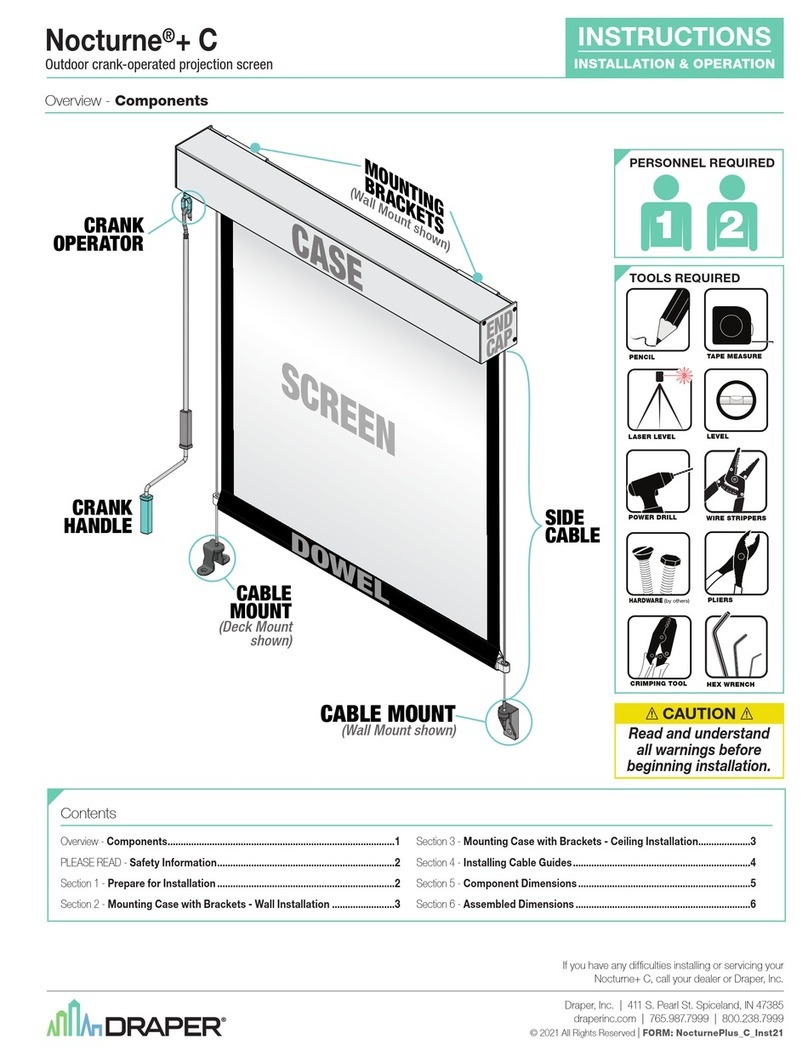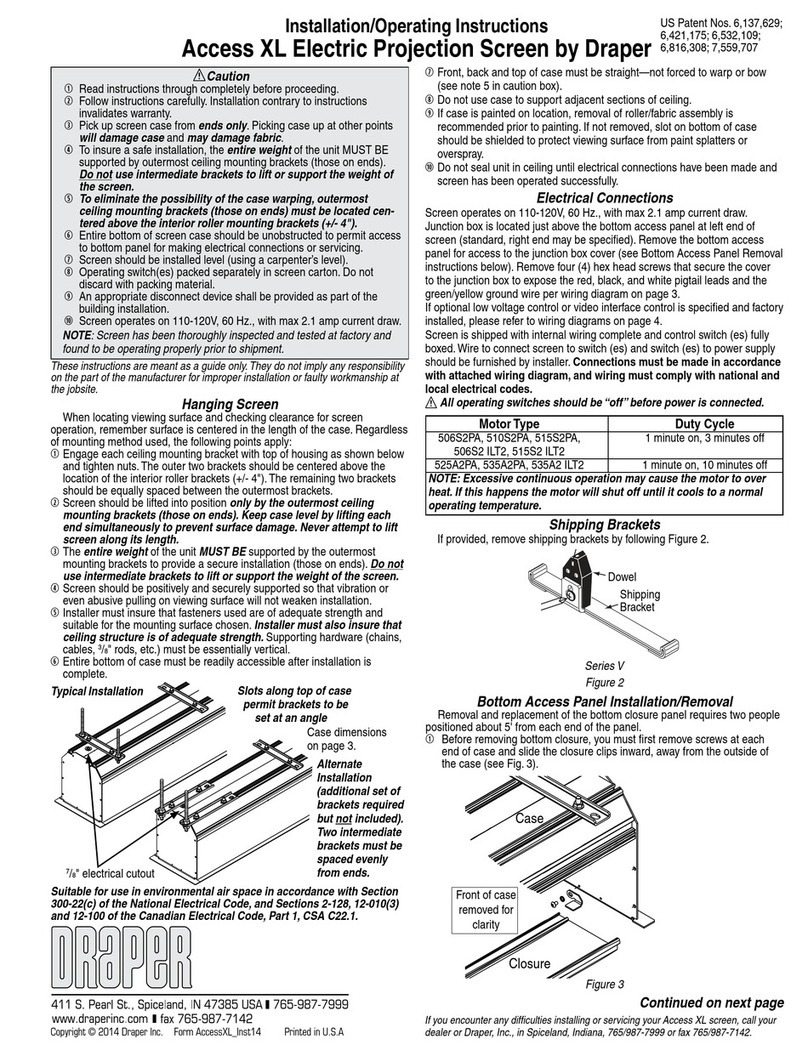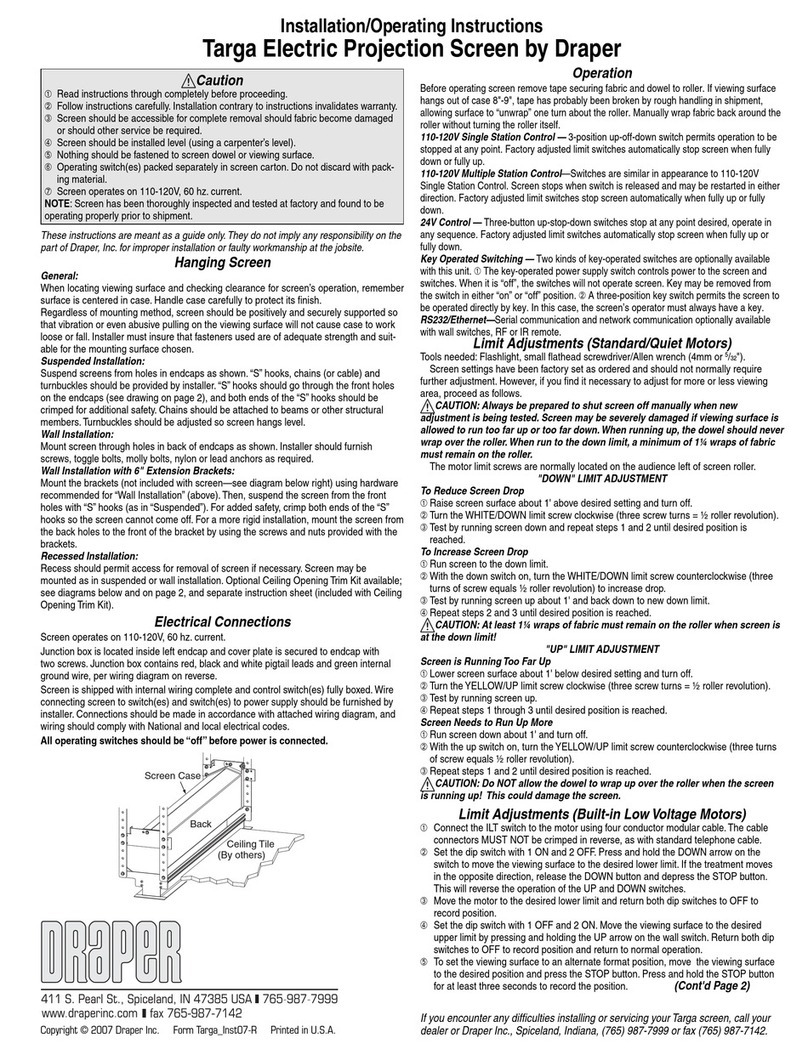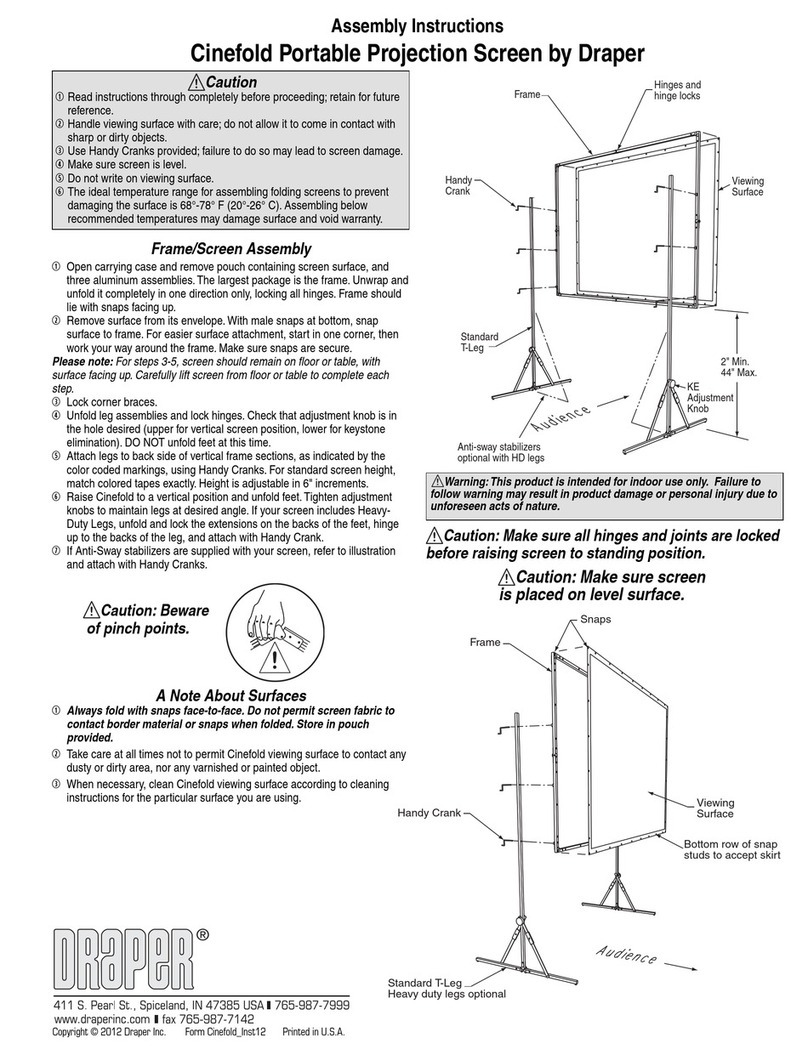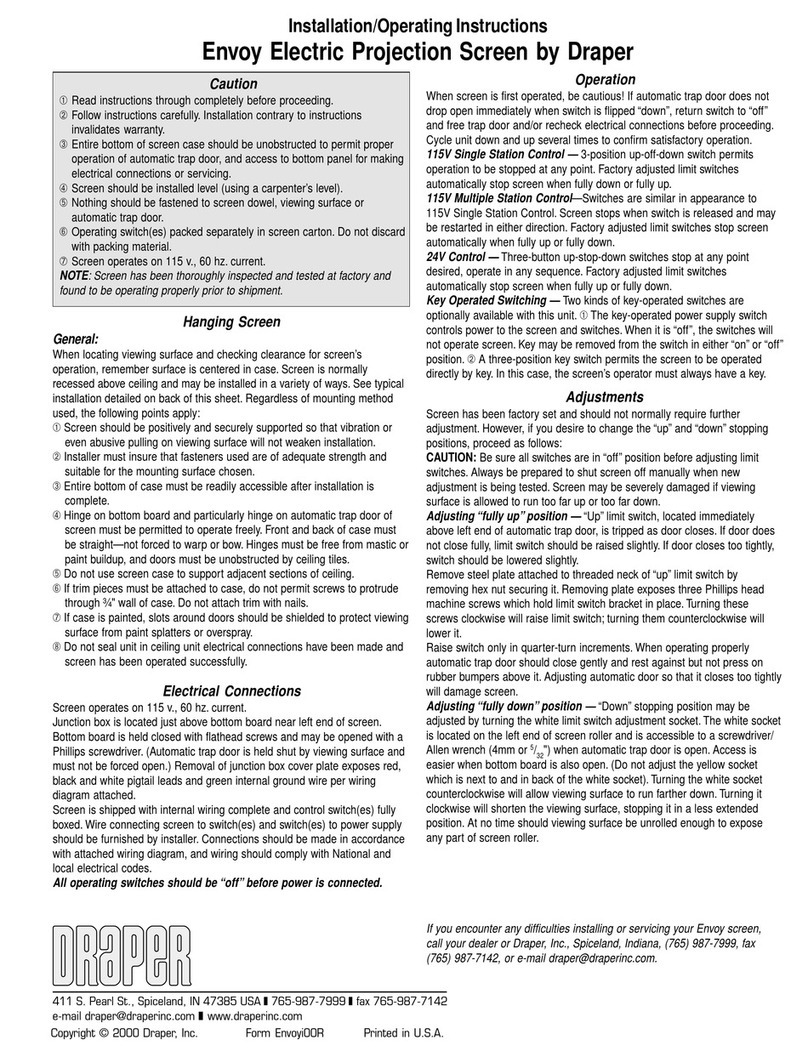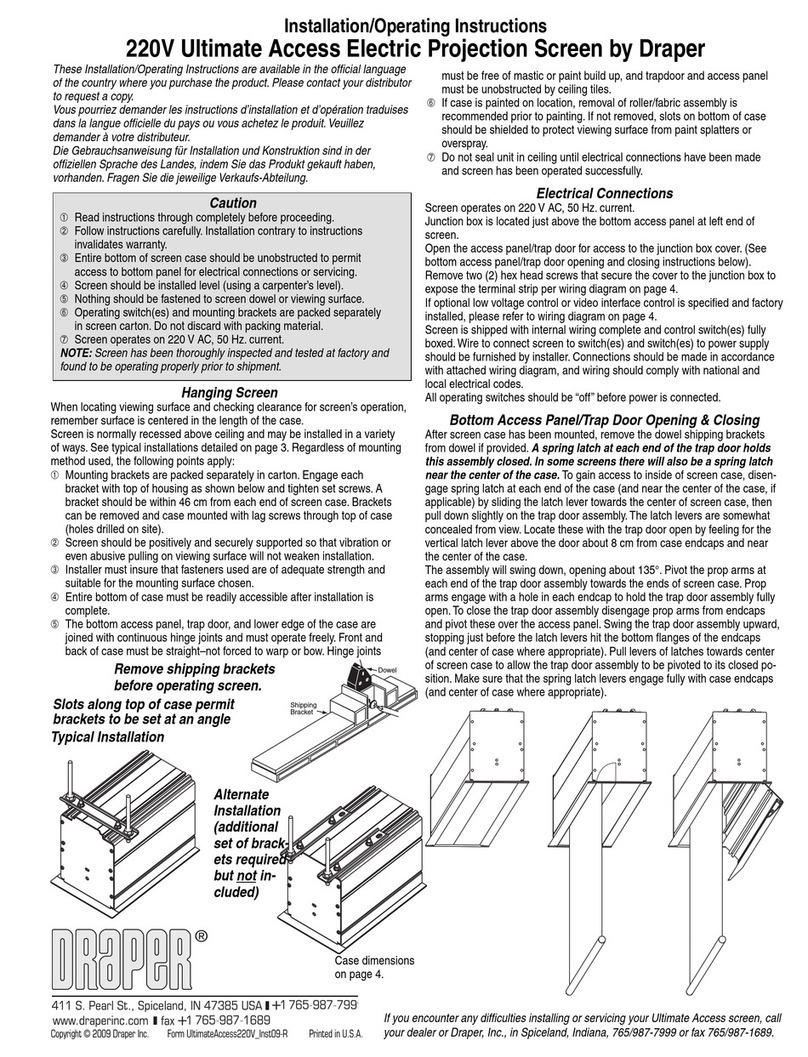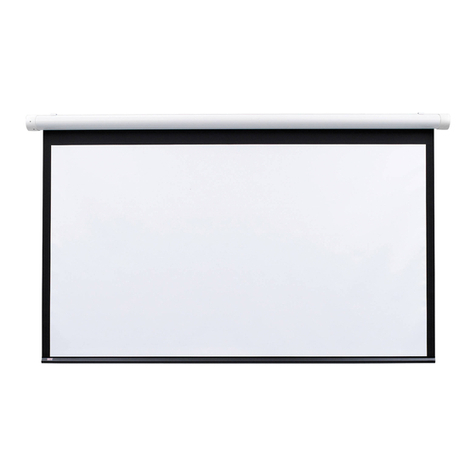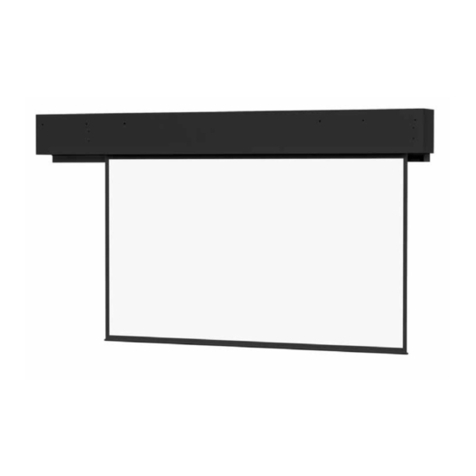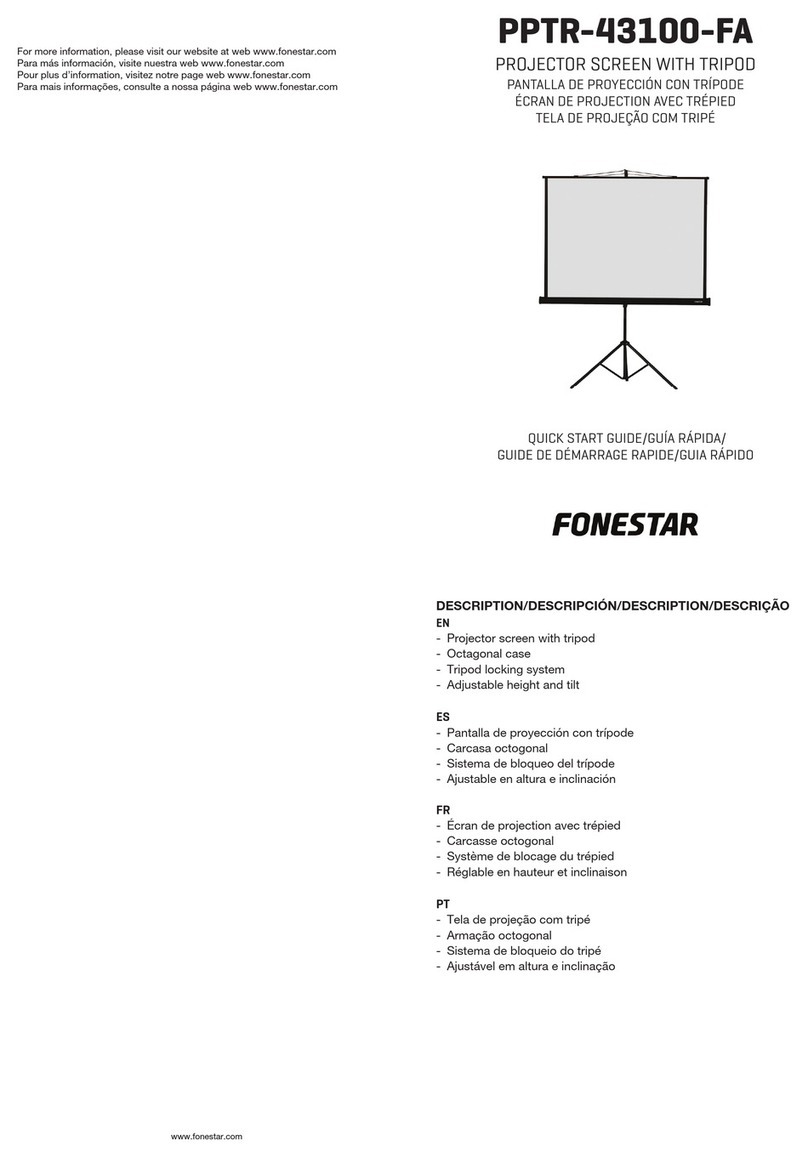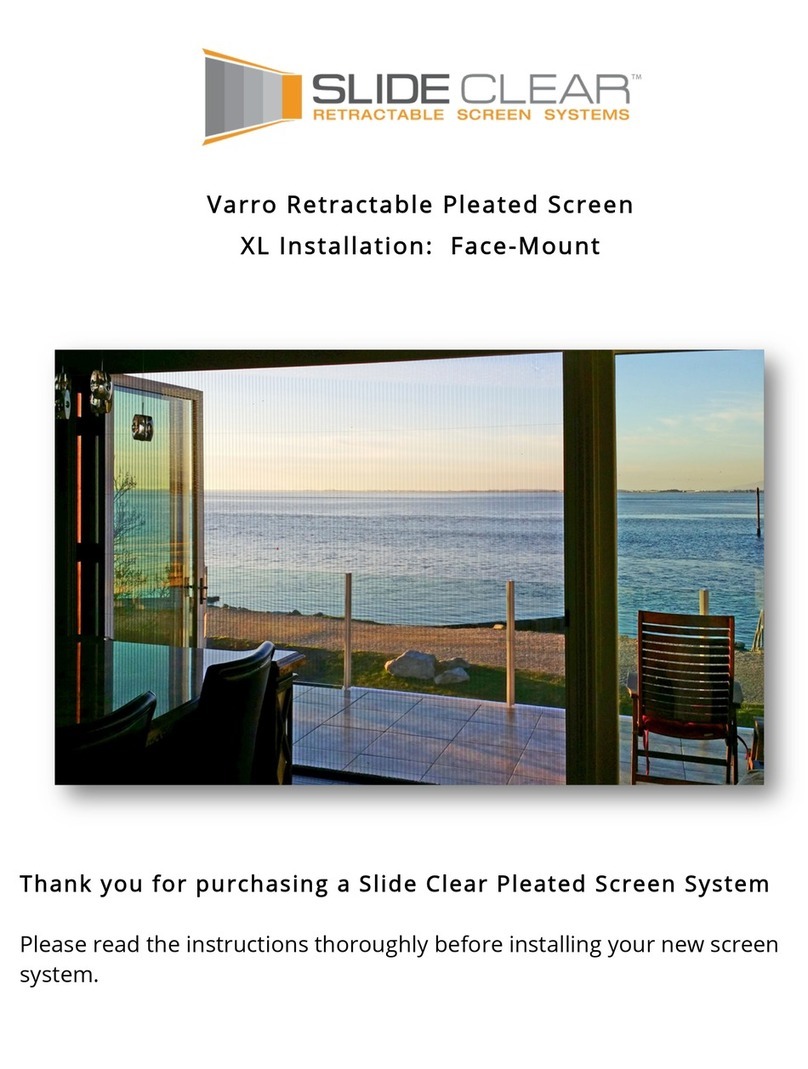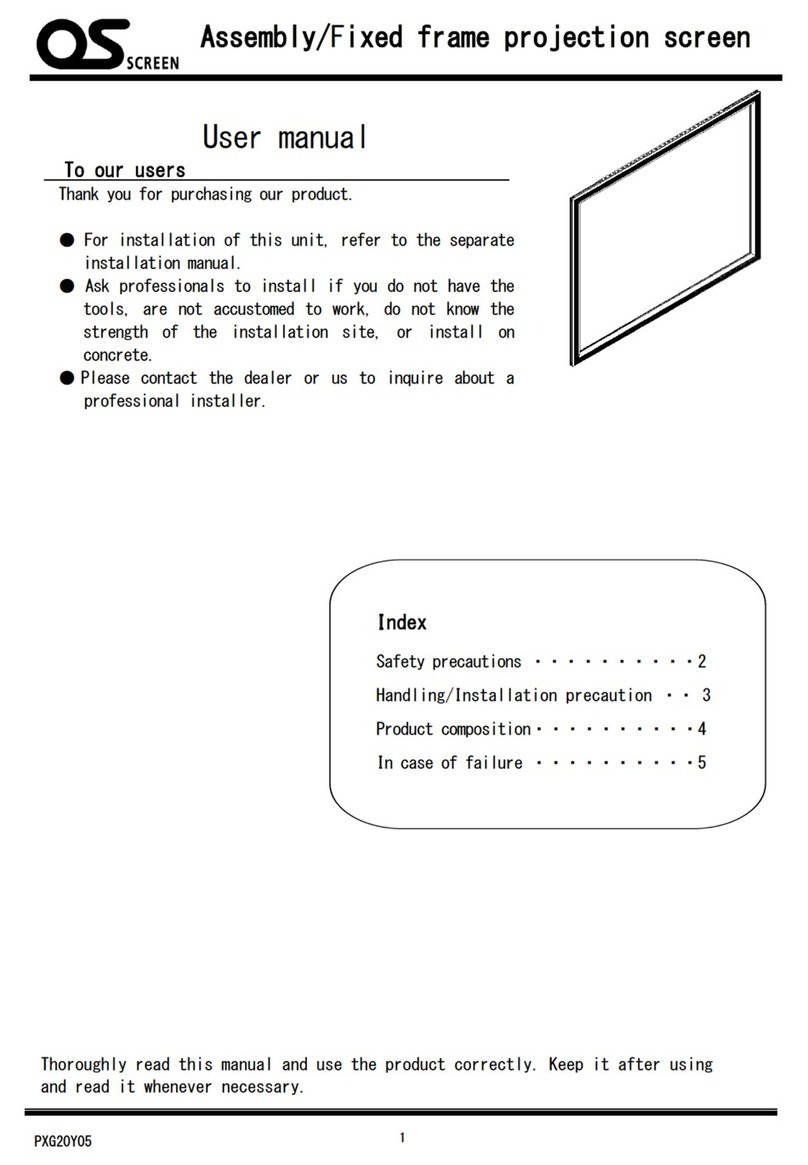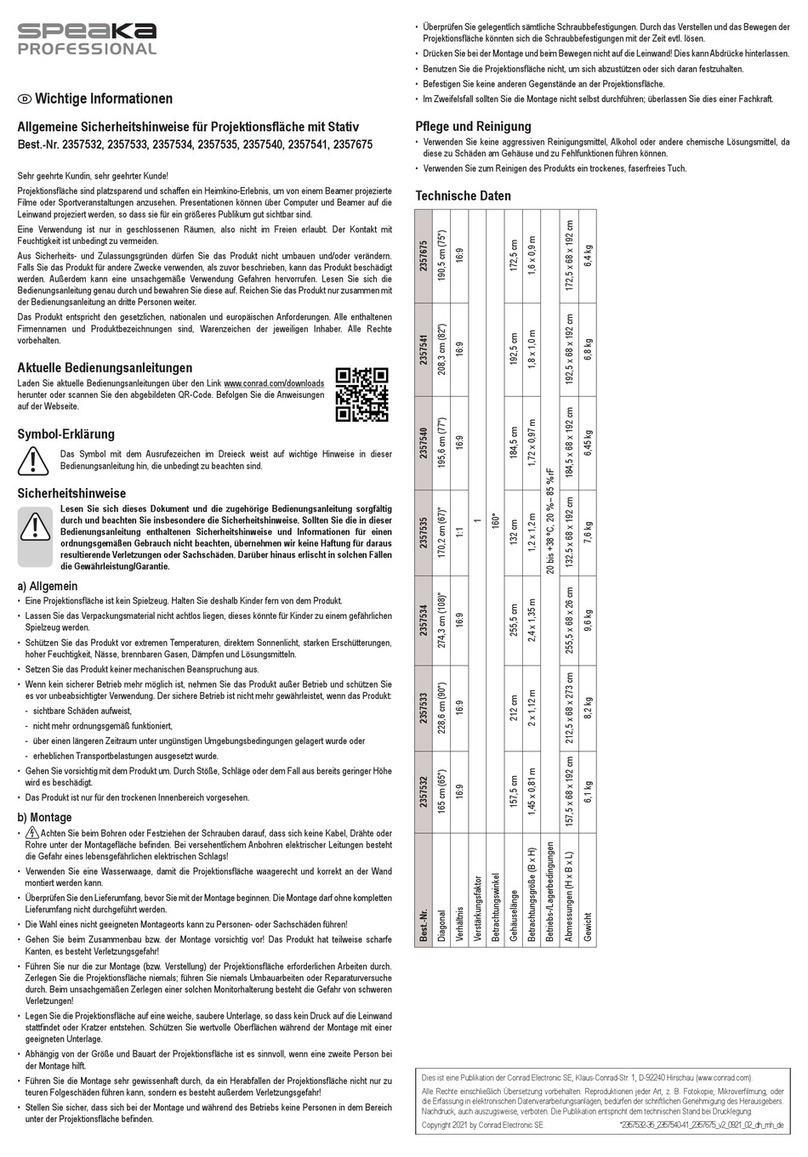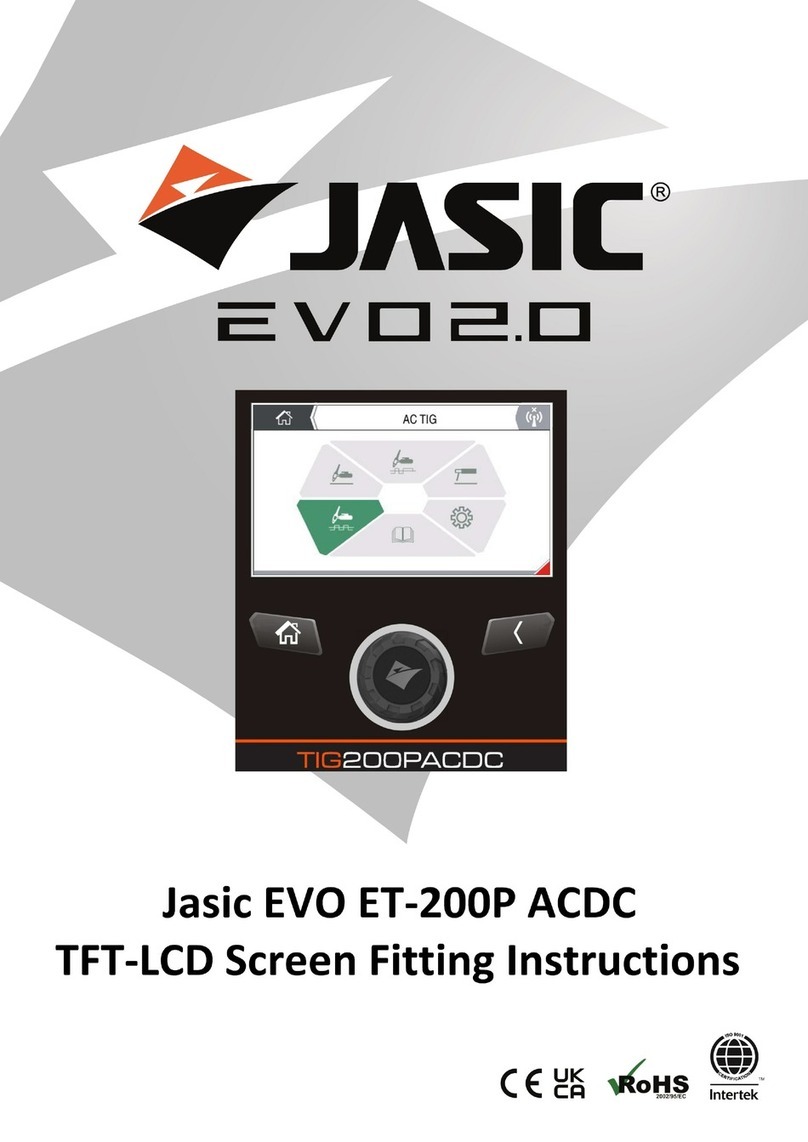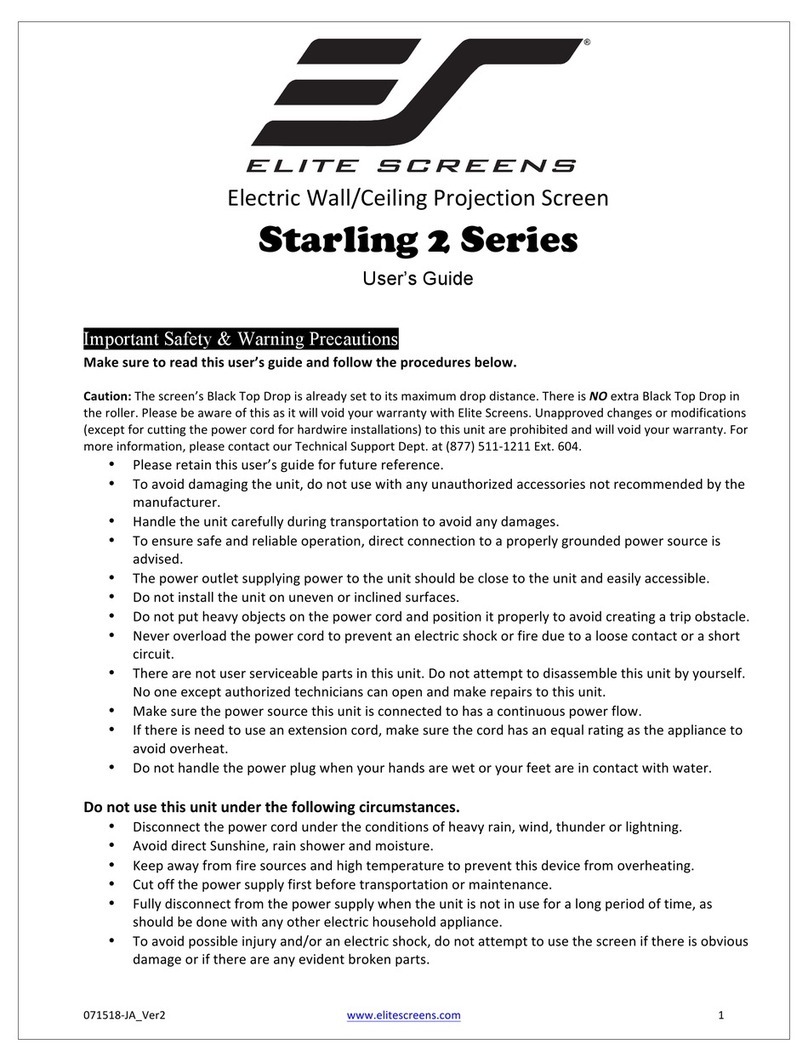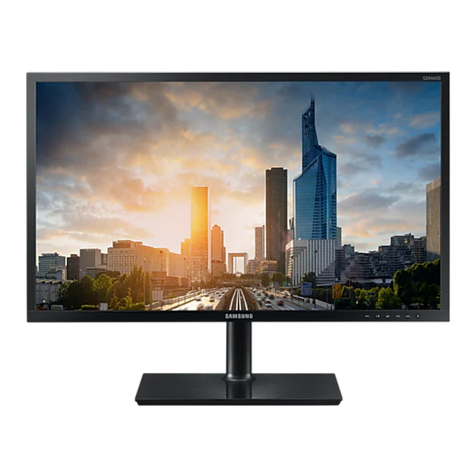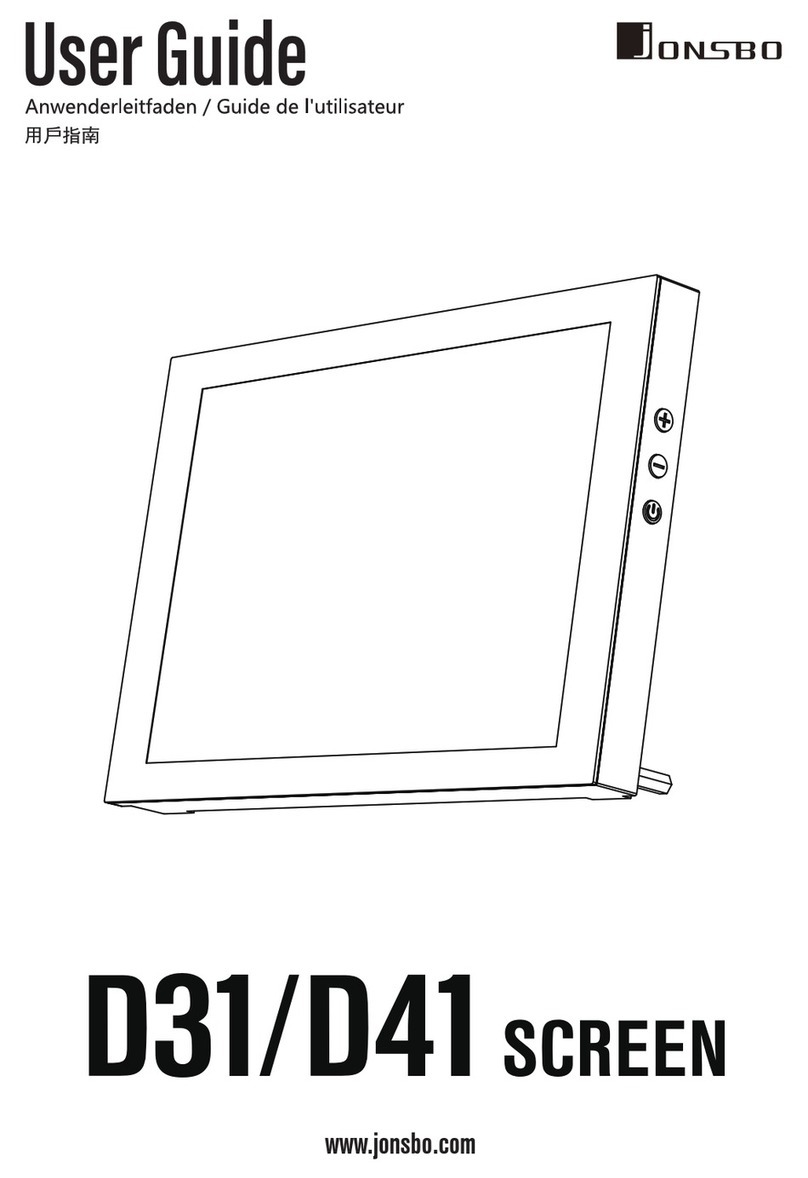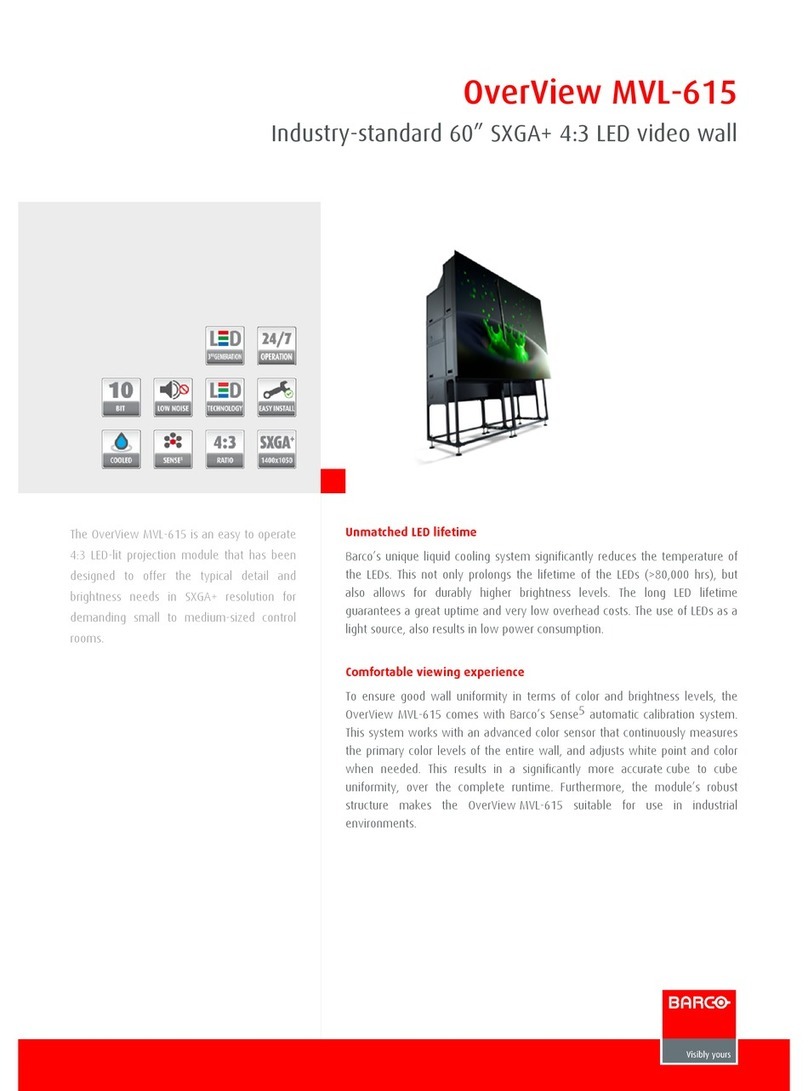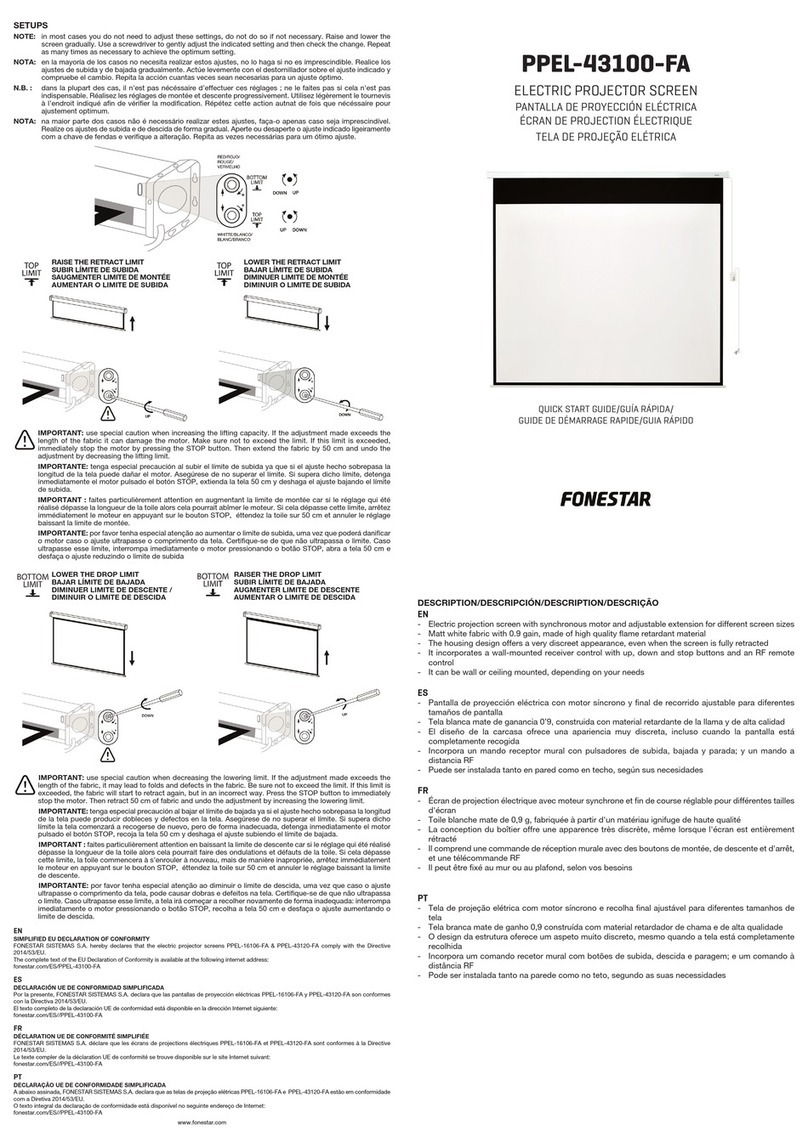
Installation/Operating Instructions
220V Ambassador Electric Projection Screen by Draper
These Installation/Operating Instructions are available in the official language of
the country where you purchase the product. Please contact your distributor to
request a copy.
Vous pourriez demander les instructions d’installation et d’opération traduises
dans la langue officielle du pays ou vous achetez le produit. Veuillez demander à
votre distributeur.
Die Gebrauchsanweisung für Installation und Konstruktion sind in der offiziellen
Sprache des Landes, indem Sie das Produkt gekauft haben, vorhanden. Fragen
Sie die jeweilige Verkaufs-Abteilung.
Screen is shipped with internal wiring complete and control switch(es) fully boxed.
Wire connecting screen to switch(es) and switch(es) to power supply should be
furnished by installer. Connections should be made in accordance with wiring
diagram, and wiring should comply with National and local electrical codes.
All operating switches should be “off” before power is connected.
Operation
When screen is first operated, be cautious! If automatic trap door does not drop
open immediately when switch is flipped “down”, return switch to “off” and free trap
door and/or recheck electrical connections before proceeding. Cycle unit down
and up several times to confirm satisfactory operation.
220V Single Station Control—3-position up-off-down switch permits operation to
be stopped at any point. Factory adjusted limit switches automatically stop screen
when fully down or fully up.
220V Multiple Station Control (Not CE approved)—Switches are similar in ap-
pearance to 220V Single Station Control. Screen stops when switch is released
and may be restarted in either direction. Factory adjusted limit switches stop
screen automatically when fully down or fully up.
24V Control (CE approved)—Three-button up-stop-down switches stop at any
point desired, operate in any sequence. Factory adjusted limit switches automati-
cally stop screen when fully down or fully up.
Key Operated Switching (Not CE approved)— Two kinds of key-operated
switches are optionally available with this unit. 1The key-operated power supply
switch controls power to the screen and switches. When it is “off”, the switches
will not operate screen. Key may be removed from the switch in either “on” or “off”
position. 2A three-position key switch permits the screen to be operated directly
by key. In this case, the screen’s operator must always have a key.
RS232/Ethernet—Serial communication and network communication optionally
available with wall switches, RF or IR remote.
Adjustments
Please Note: Screen limits are factory set for optimum performance of
the screen. A procedure is outlined below for minor tweaks, but any
adjustment of these limits may negatively affect the flatness of the
screen surface and could also void the warranty. Please check with
Draper prior to resetting screen limits.
CAUTION: Always be prepared to shut screen off manually when new
adjustment is being tested. Screen may be severely damaged if viewing
surface is allowed to run too far up or too far down
.
CAUTION: Be sure all switches are in “off” position before adjusting
limit switches.
Adjusting “fully up” position — “Up” limit switch, located immediately above left
end of automatic trap door, is tripped as door closes. If door does not close fully,
limit switch should be raised slightly. If door closes too tightly, switch should be
lowered slightly.
Remove steel plate attached to threaded neck of “up” limit switch by removing
hex nut securing it. Removing plate exposes three Phillips head machine screws
which hold limit switch bracket in place. Turning these screws clockwise will raise
limit switch; turning them counterclockwise will lower it.
Raise switch only in quarter-turn increments. When operating properly automatic
trap door should close gently and rest against but not press on rubber bumpers
above it. Adjusting automatic door so that it closes too tightly will damage screen.
Adjusting “fully down” position — “Down” limit switch is located on left side of
limit switch assembly immediately behind access door on left end of case. Left
hand, hex head machine screw contacts limit switch button to shut screen off in
“down” position. Turning this machine screw clockwise will allow viewing surface
to run farther down before stopping. Turning it counterclockwise will cause sur-
face to stop in a less extended position. At no time should viewing surface be
unrolled enough to expose any part of screen roller. Be sure nut on machine
screw is tight against steel plate before closing access door.
Hanging Screen
Planning Installation:
1When locating viewing surface and checking clearance for screen’s operation,
remember surface is not centered in case, but rather is offset to audience’s
right (see drawing on reverse). Normally viewing surface, not case, should be
centered in room or viewing area.
2Entire bottom of case must be readily accessible after installation is complete.
3Hinge on automatic trap door must be permitted to operate freely. Front and
back of case must be straight—not forced to warp or bow. Hinges must be free
from mastic or paint build-up, and doors must be unobstructed by ceiling tiles.
4Do not use screen case to support adjacent sections of ceiling.
Hoisting Screen into Position:
1Screen should be lifted into position only by the mounting brackets. Keep
case level by lifting both ends simultaneously to prevent surface damage.
Never attempt to lift screen along its length.
2Screen must be installed level for satisfactory operation. Use a carpenter’s
level.
3 Installer must insure that fasteners used are of adequate strength and suitable
for the mounting surface chosen.
4 Bottom of case should be flush with finished ceiling.
5After case is mounted, remove two plates securing operating door to bottom
panel. Test door’s freedom to operate by pushing up gently with fingers.
6Do not seal unit in ceiling until electrical connections have been made and
screen has been operated successfully.
Finishing Case:
1If case is painted, slots around doors should be shielded to protect viewing
surface from paint splatters or overspray.
2 If trim pieces must be attached to case, do not permit screws to protrude
through ¾" wall of case. Do not attach trim with nails.
Electrical Connections
Screen operates on 220V AC, 50 Hz., 1 ph. current.
Junction box is located at left end of screen case and may be exposed by opening
access door and removing junction box cover. Automatic trap door is held shut
by viewing surface and must not be forced open. Junction box contains brown,
black and blue pigtail leads and green internal ground wire, per wiring diagram on
reverse.
Copyright © 2013 Draper Inc. Form Ambassador220V_Inst13 Printed in U.S.A.
If you encounter any difficulties installing or servicing your Ambassador screen,
call your dealer or Draper, Inc., Spiceland, Indiana, USA (765) 987-7999.
Caution
1Read instructions through completely before proceeding.
2Follow instructions carefully. Installation contrary to instructions invalidates
warranty.
3Do not lift case in center. Lift the ends simultaneously to avoid damage
to case and surface.
4Entire bottom of screen case should be unobstructed to permit proper
operation of automatic trap door, and access to bottom panel for making
electrical connections or servicing.
5Screen should be installed level (using a carpenter’s level).
6Nothing should be fastened to screen dowel, viewing surface or automatic
trap door.
7Operating switch (es) packed separately in screen carton. Do not discard
with packing material.
8Screen operates on 220V AC, 50 Hz., 1 ph. current.
NOTE: Screen has been thoroughly inspected and tested at factory and found
to be operating properly prior to shipment.
®
102
mm
76
mm
251
mm
127
mm
254
mm
260
mm
(rods, angles, & attaching
hardware by others)
on left end
Wood case
Incl. brackets
Ceiling Tile
and grid
(by others)
These instructions are meant as a guide only. They do not imply any responsibility
on the part of the manufacturer for improper installation or faulty workmanship at
the jobsite.

